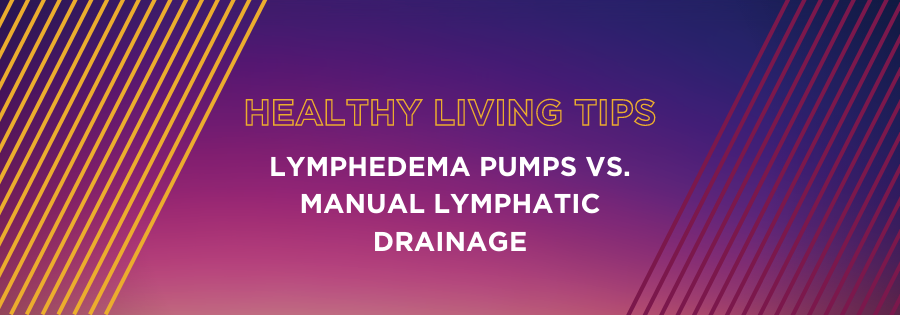VIDEO: Lymphedema Pumps vs. Manual Lymphatic Drainage

Back to physical health resource hub
Video Transcript
Hi everyone, Carolyn, certified lymphedema therapist with Brooks Rehabilitation, coming back for more lymphedema talk.
One of the questions that I get quite often from my patients is, “Why would I have to use manual lymphatic drainage when I can just ask for a prescription for a lymphedema pump and use that instead?”
Well, there’s a couple of reasons. One, the lymphedema pump is not really great for head, neck, or abdomen. They just don’t make them for those parts. So they are made for the arms and the legs.
And two, it is a passive treatment. It only works while it’s on. So you may want to sit and put your feet up and have that pump on, but you’re not gonna be able to walk around the house. You’re not going to be able to do anything else except maybe read a book or watch TV. So it can be inhibitive to other activities.
And three, the pump only actively treats that limb with pressure. It forces the fluid through the limb, into the next area. The problem with that is it doesn’t stimulate the lymphatic drainage system. The lymphatic drainage system can be stimulated as an open-ended system to help the other areas that aren’t working as well.
So think about sending some extra workers from one job site to another to help out. And that’s what manual lymph drainage does.
Manual lymph drainage stimulates the entire lymphatic system to increase its suction, so that the impaired part of the system gets extra help and support to remove and clear the excess fluid. This allows the body to remove the fluid by bringing it into the circulatory system through the left thoracic angle. It gets processed through the kidneys, and then we urinate out the excess fluid and our body takes care of the other parts of the trash, like the dead white blood cells and the protein cells.
This is an important thing to remember when we’re comparing manual lymph drainage versus pumps. We’re taking the manual lymph drainage, which is a very active treatment, versus pumps, which is a passive treatment. The pump will only work while it’s on. Manual lymph drainage continues to stimulate the system for a while after it’s complete.
This is going to give you a more effective drainage, and is going to give you more power over your lymphedema and give you more ability to treat and control it. I hope that answers your question. If not, please comment on the video below. I’m more than happy to get back at you with any questions that you might have.
For more healthy living tips, visit our YouTube Playlist.


